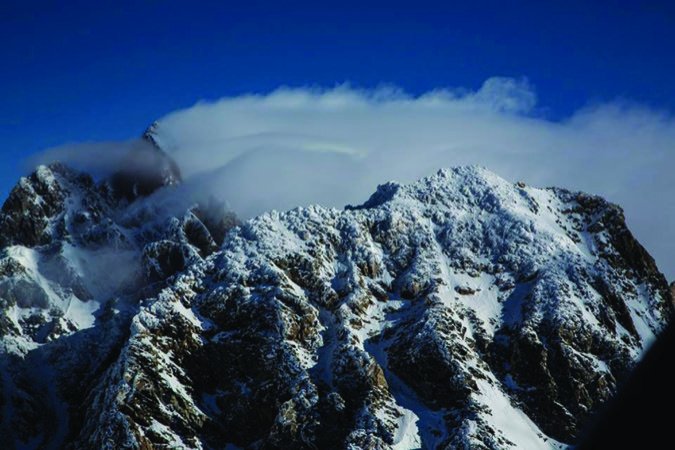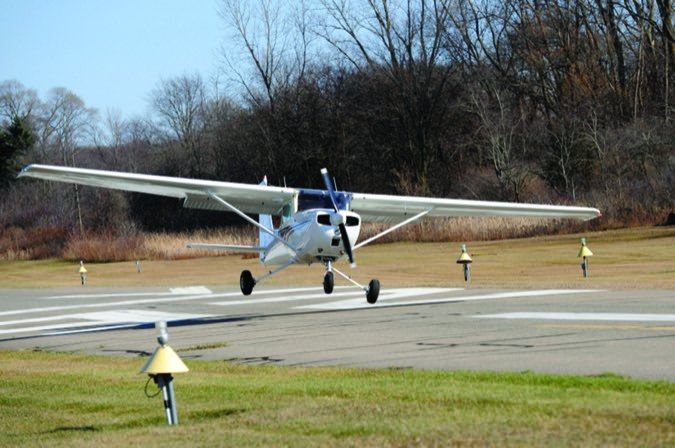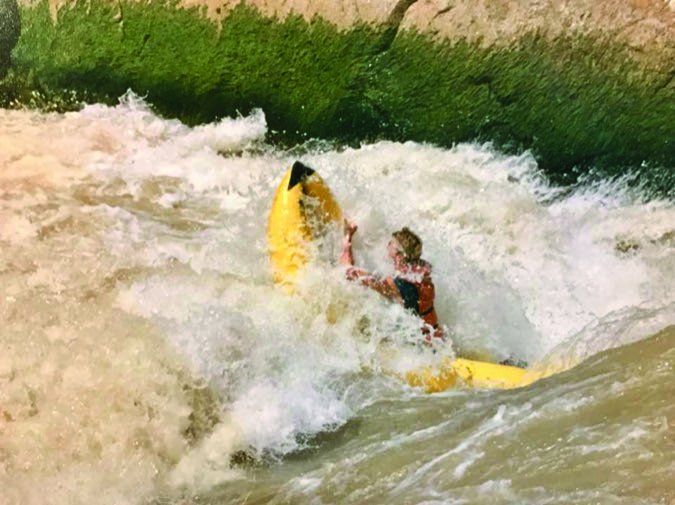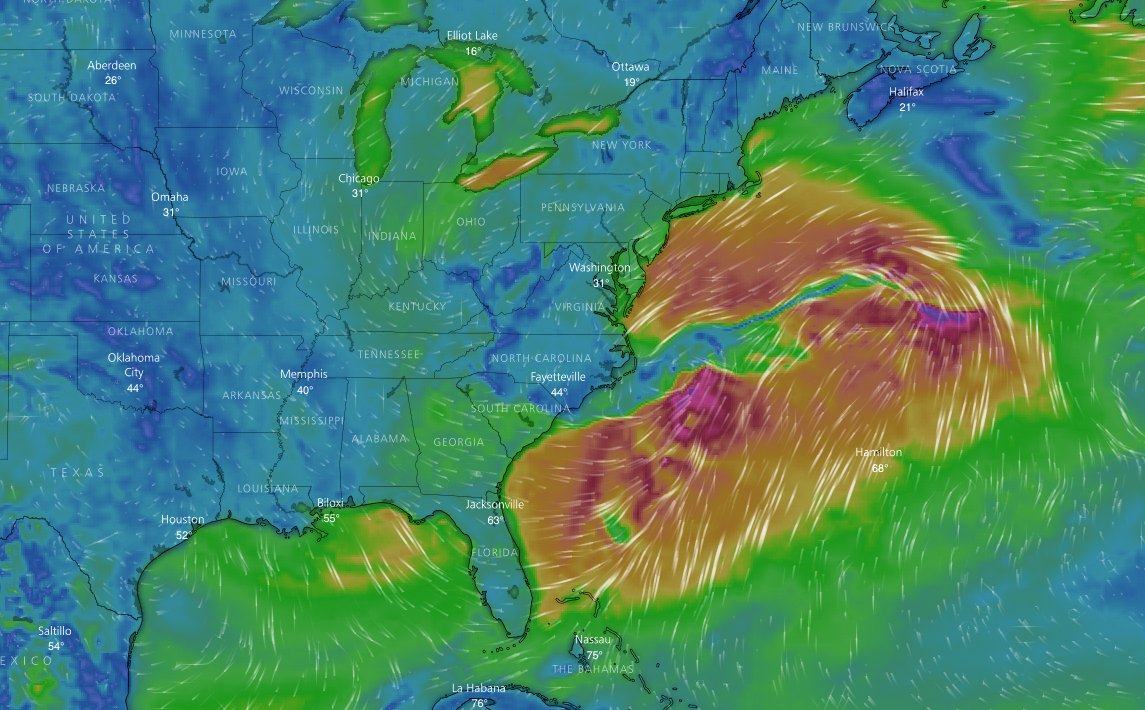Most pilots venture into windy conditions with enough skills and smarts to know how to either avoid or cope with them. But wind-related accidents are still commonplace, so clearly we don’t always get it right. One reason for this may be fairly simple: With the exception of blowing snow, tornadoes, dust devils and some cloud formations, wind is usually invisible. To visualize what is going on, you have to visualize wind currents, which is where my experience whitewater rafting has served me well.
I have found that the best way to avoid unpleasant surprises is to anticipate them. Wind socks and bent trees are great clues, but even without them it’s possible to know when and how an encounter with wind will affect your aircraft. To visualize what is going on, you need to have a bit of scientific understanding, a bit of imagination and the humility to accept when you need to run away.
Laminar vs. Turbulent Flow
Unobstructed straight winds, more precisely known as laminar flow, shouldn’t be much of a problem for most pilots. Wind that flows in a constant stream is easy to visualize, especially when it causes the airplane’s tail to weathervane and the pilot knows that crabbing into the wind will counter the effect.
Turbulent flow is much more of a problem. When laminar flow interacts with ground features like buildings, rows of trees or—at a larger scale—features in terrain like ridges and canyons, the resulting turbulence can hold some nasty surprises. Turbulence and wind shear often catch pilots off-guard and can result in mishaps such as hard landings, ground loops, excursions off the runway or overstressed airframes.
When I fly, I translate my understanding of how water flows over rocks, funnels through gaps and pours over ledges into a mental visualization of the air flow, both laminar and turbulent. I try to visualize it as though it were visible, where it flows freely and where it flows over obstacles and terrain features. I don’t always get it right, but it usually helps me predict what the wind or thermals might be doing before I encounter the actual effect.
When I am near a ridge, I combine my knowledge of the winds aloft forecast and my understanding of the aspect of the slope of the terrain with respect to shade and sun. I try to anticipate where I will encounter the resulting updrafts and downdrafts, either from wind or from thermal activity. It’s nice to be able to give passengers a heads-up about when we might encounter turbulence, what form it might take and how long it might last. It’s even nicer when my understanding allows me to adjust my flight path to avoid the invisible obstacle altogether.
Turbulence and Rotors
Water and air are both fluids and follow very similar flow patterns. Study a river and look at the downstream side where water flows over an obstruction and you will see a hydraulic feature called a wave. When the flow is high and the gradient steep, the top of the wave will be punctuated by a breaking feature. If the obstruction is uniform and mostly perpendicular to the flow, the wave evolves into a strong hydraulic reversal where the wave is all but missing and the reversing roller is all that remains. Boaters call this a hole, and sometimes they can be fun to run. But when waves and holes coincide with a steep drop or one that is very uniform across the flow, the hydraulics can be powerful enough to stop or even flip a boat. Holes like these are often referred to as drowning machines.
When flowing air encounters obstructions, it produces very similar hydrodynamic features as those found in rivers. At the ground level, a stiff wind passing over a line of trees or a building will have a turbulent zone on the downwind side. The magnitude of this turbulent zone scales with both the magnitude of the wind and the size and uniformity of the obstruction. When strong winds are flowing at a 90-degree angle to an extremely uniform obstruction, the same dangerous strong hydraulic reversals that turn a weir or low-head dam into a drowning machine can emerge. Pilots call these a rotor.
I once landed at a small airport on the windy plains of west Texas with a strong 90-degree crosswind. The wind favored neither of the two runways, and I could literally choose either one because conditions were within the demonstrated crosswind component of the Cessna 182 I was flying. Right above the runway in the flare, I got caught in a violent rotor that first pushed me to the runway in a very hard landing, then pushed me in the direction opposite the crosswind. I salvaged the landing, but the wind was entirely unexpected. It shouldn’t have been.
It didn’t take long to deduce what happened. There was a long uniform line of trees and hangars on the windward side of the runway to my left. They created a uniform obstacle directly across the flow of the crosswind and, like a weir or low-head dam, they induced a violent, resonant roller. As I began to flare, I was hit by a downdraft followed by a counter-intuitive push back toward the direction of the obstruction. A plastic shopping bag carried on the wind proved it. At about 20 feet aloft, it hit the same rotor. It swirled down to hit the runway, blew backward across the runway in the opposite direction, flew back up into the air and then continued onward across the field in the crosswind.
Since then, I have always been on the lookout, knowing that any strong crosswind flowing across a uniform barrier can create unusually strong turbulence due to resonance. Since runways are typically aligned with prevailing winds, turbulent rotors near the ground stemming from orthogonal obstructions to the runway will generally be more uncommon. However, runways in forested or wooded areas are often lined with trees, which can create strong, uniform rollers once you drop below their tops.
This same rotor effect gets scaled up with terrain, even small mountain ridges. Uniformly straight ridges tend to create resonant flow patterns, which are amplified as the wind angle approaches 90 degrees. Whenever winds aloft are perpendicular to a mountain ridge, especially straight unbroken ridge lines, stay clear of the leeward side.
Mountain ranges like the Tetons, Sierras, Appalachians and the Basin and Range mountains of the Great Basin all have strong linear trending ridge lines that make them amplifiers of resonant waves—mountain waves that are carried into the flight levels. When winds hit these ridge lines at a 90-degree angle, it can be a bad idea to be on their leeward side. (The wind effect known as a mountain wave is a totally different animal worthy of a separate article.)

When crossing a ridge or mountain range, keep in mind that the greatest turbulence—and most forceful downdrafts—will be on the lee side.
Thermal Effects
Thermal effects are another condition pilots should consider besides obstacles and winds. Slopes facing the sun will have rising thermals. Slopes in the shade will often have descending air. As you approach ridges or tall obstacles, imagine how the flow of wind across them interacts with the rising and sinking air due to slope, aspect and solar angle. With a little imagination, you can visualize where the rotors, updrafts and downdrafts will be forming in the invisible fluid.
The general way to avoid dangerous ridgeline wind currents is to either cross well above them or try to avoid them entirely. When winds are particularly strong and the obstacles particularly high, you may not find a refuge above, but can often find shelter from the effects of the wind shadow of the mountain. On the other hand, while hugging the ground well below a mountain range may provide a smoother ride, it also has the distinct disadvantage of having less altitude in the bank to buffer you from other hazards, like a faulty engine or poor fuel planning.
Much of the time, I fly out of Salmon, Idaho, which nestles at the confluence of three main mountain ranges. They are very linear, trending from the northwest to the southeast. When winds aloft are strong and from the southwest, the rollers on the leeward side of the mountains can be powerful. Flying in the shadow of the mountain provides little safety. That said, on the windward side, the orographic lift of air hitting the southwestern slopes of the mountains will turn a crosswind into a helpful, though often-turbulent orographic updraft that can be amplified a bit by solar-induced thermal lifting. If it is too nasty near the uplift, I can seek refuge flying in the middle of the valley, gauging my distance with the strength of the wind and my past experience. There are always options for increasing safety and comfort if you know how and where to look for them.
Terrain Channeling
Just as a river’s banks will constrain and accelerate the flow of water in river channels, terrain can force wind into a channel-like flow. Whenever wind direction aligns with constrictions in the terrain, there is a Venturi effect, where localized winds near the constriction will accelerate and areas on the boundaries near the constriction can be turbulent.
For example, when predominant westerly winds squeeze into Idaho’s Snake River Plain, the Venturi effect makes straight winds of 30 to 50 knots fairly common. Because this funneling is caused by lower level obstructions, winds aloft may be doing something entirely different, creating a shear zone that can include turbulent interaction. When you see the winds aloft shifting dramatically in direction with altitude, anticipate turbulent conditions.
One More Tool
Air is much more free-flowing than the water in a river, which represents a highly idealized fluid flow constrained by the river’s banks. Air flows in three dimensions, has fewer constraints and many more currents, and varies in behavior with altitude. It is altogether more complex, but I have found that I am better able to anticipate winds and avoid unpleasant surprises by making a conscious effort to visualize, analyze and predict what will happen. Besides, there is nothing more fun than impressing your passengers by announcing, “Updraft coming in 3, 2, 1…” and on the mark, feel the updraft right when you called it.
Size Matters
In water, small waves and micro currents affect smaller boats much more than a large, heavy gear boats. This same effect is true with wind and aircraft. Small, light planes, like Piper Cubs, Cessna 150s and various light sport aircraft can be a real handful in windy conditions and are tossed about by turbulence and wind shear much more readily than heavier aircraft like King Airs and Caravans.
On the bright side, just as kayaks and small boats are more maneuverable, lighter aircraft tend to be easier to fly and more responsive to control inputs. So when gusts or downdrafts get you into trouble, a quick addition of power will often allow a go-around.

Wet Wind
In my early twenties, I was a hydrodynamic fluid flow specialist—I guided or was a River Ranger on whitewater stretches on a handful of rivers in Colorado. I was a specialist running Class III through V whitewater and made a living off my ability to “read water.”
Reading water is a term of art used by whitewater boaters that reflects understanding of the way water flows down a rapid and how the resulting hydraulic features will affect the boat. Reading water is critical to both safety and earning tip money. You can maximize the fun (hitting whoopie-water for the tourist) but you also need to avoid the perils of the more dangerous parts of the river like particularly powerful features like the reversing “hole” at Skull Rapid and asymmetric lateral waves that appear below Funnel Falls at some water levels.
Reading whitewater rapids is relatively easy, because you can see the features like tongues, reversals, eddies, standing waves, breaking waves and lateral waves. You can also ask other boaters how a particular feature is behaving based on changing water levels. Experience eventually teaches you how each feature will affect your craft.
Dealing with wind is similar, in that your skills increase with experience, but reading the wind requires a bit more imagination.

Windy.com
This online tool is an excellent way to visualize wind. It can be used around the world for weather information and forecasting but also allows zooming in to examine localized wind information. For pilots, it provides wind direction and strength, including predictions at different altitudes.

This article originally appeared in the April 2018 issue of Aviation Safety magazine.
For more great content like this, subscribe to Aviation Safety!




































Operating a commercial hot air balloon operation for two decades, your wind summary is spot on. Wind is the engine, directional control or brake for a lighter-than-air (LTA) aircraft and its through understanding critical to safe operations. We use all the elements mentioned in maneuvering a LTA and its understanding critical when winds pick up.
Great article, thanks. Also, the windy.com site is an excellent resource.
“Wind … causes the airplane’s tail to weathervane and the pilot knows that crabbing into the wind will counter the effect.” Nice article but this is either incorrect or mixes two topics. Weathervaning happens when the plane is on the ground and the center of pressure of the wind on the plane is behind the main wheels, so the plane wants to rotate on its wheels into the wind. When the plane is flying, a crosswind (in smooth air) has NO effect on the orientation of the plane relative to the air, but affects the trajectory over the ground. Flying an ILS into Oakland in summer for the first time you descend into the marine layer and shortly after that start noticing that you are off course to the right, and have to hold a larger course correction to the left. This is because the air mass the plane is in is now moving more left to right across the course Nothing about how the plane is handling alerts the pilot to this increased crosswind.
The thermal part of the article reminds me of a lecture at COPA’s convention in Red Deer AB circa 2003.
A mountain flying exercise was arranged to benefit the many low-land pilots attending. Out into the mountains in a relatively easy way then back a different route.
Presenter said to the effect of “A side note is that the second wave of you may notice a sink coming across the river west of here.” Farmland hot, river cool.
The preparatory lectures were very good, general education on mountain flying plus drill for the flight which flight would have been neat to go on. (There were two groups of airplanes, early start planned but delayed thus the second group returned in the heat of the afternoon.)
I once flew into an airport that I was fighting the crosswinds all the way down to the tree line. As I got under the tree line, the winds stopped, and I had a beautiful landing! Certainly surprised me there. Another time I crossed over a front, and was faced with a 30 MPH. crosswind to an airport I was wanting to make a bathroom break at. Not wanting to overturn an aircraft, I went to another airport that had a runway inline with the winds. 75 miles away. Needless to say, that was the fastest bathroom break I ever had.)
Interesting… I taught whitewater rafting and canoeing at Georgia Tech (while I was still in high school. Note- my father was a professor there and I was more of an assistant) Physics students would take the course to visualize hydraulic systems and eddy currents around rocks.
That is also how I visualize air flow, like water flowing down a river. And how I explained air flow to student pilots (we are all permanent student pilots). It becomes very important when the winds are high and you are flying low in a helicopter around a large city. That airflow can be as disruptive as a Class 5 or 6 rapid. In a Robinson this could mean you will possibly get a tail strike and fall to your death… not a pretty sight as we have seen recently.